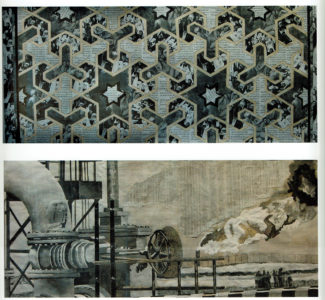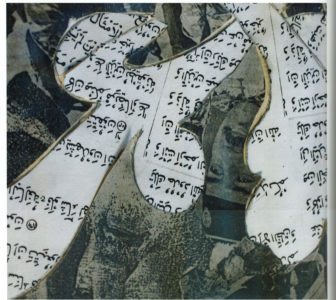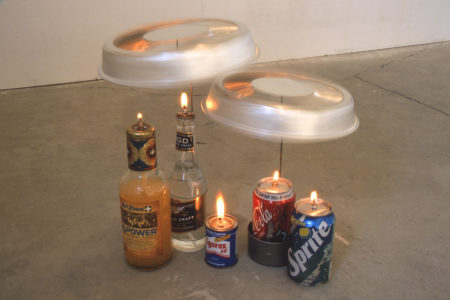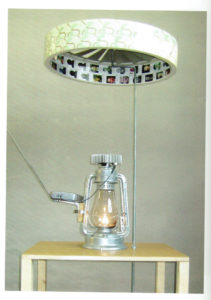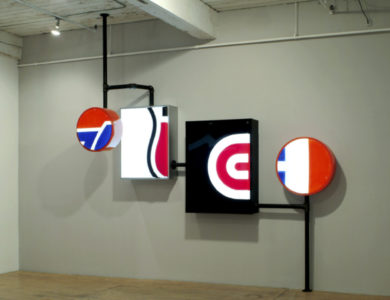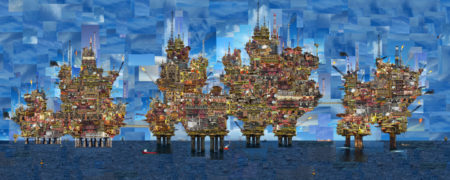Workshop XVIII, Elena Sorokina, 28 January 2021
Russian-born, Paris-based curator and art historian Elena Sorokina presents Petroliana, the exhibition which she curated for the 2007 Moscow Biennale of Contemporary Art, based on her previous exhibition Crude Oil Paintings in 2004 at White Columns, New York. The title of the 2004 exhibition is also that of the work of the first artist she invited to participate, Yevgeniy Fiks, whose project Crude Oil Paintings included a series of letters he received from oil companies rejecting his request for crude oil samples.
Elena Sorokina’s exhibitions are intersectional. She contextualises Petroliana by juxtaposing Soviet-era socialist realist visual glorifications of industrialisation and the Space Race, and the increased visibility of the substance of oil during the post-Communist privatisation of the 1990s. Oil metamorphosed from its prior status as a ‘national treasure’ into the most desirable capitalist commodity. This change in representation is addressed in Petroliana by works such as Anton Ginzburg’s Suck It Off (an oil canister connected to the gallery’s white wall) and the performative oil-smuggling balloon pipeline created by the Ukrainian group R.E.P.
Sorokina’s practice is inspired by Susan Buck-Morss’ book Dreamworld and Catastrophe (2000), and its intersectional approach to mass utopias in the twentieth century, which allows us to trace similarities and connections between East and West, rather than focusing on differences. Thus, Sorokina identifies, for example, such intersections in Michael Bay’s big-budget Hollywood film Armageddon (1998), with its transitional post-Cold War ideological confusions and model of sacrificial masculinities. In the exhibition, works by Iván Navarro, Heidi Cody and Armin Linke focus on the Iraq War and peak oil.
Petroliana was built on intersections such as: images of masculinities and heroization of labour; mining and harvesting; dreamworlds and catastrophes; and extraction and cultivation. Justin Beal’s digital photocollage Everything is Going According to Plan II (2003), for example, interrogates the paradoxes of offshore platforms inspired by Situationist architecture, by the plug-in cities. The exhibition also featured Johan Grimonprez’s experimental film Dial H-I-S-T-O-R-Y (1997) about the history of skyjacking.
Petroliana dealt with politics and ideologies. Sorokina also considers that oil can be understood as a ‘new sublime’, following the definitions of Edmund Burke and Immanuel Kant, an experience which arises when we come into contact with nature. Sorokina’s concern with the end of oil has remained. How do we relate to nature? Modernist ideas of the domination of nature led to an actual domination of nature, which was brutal under the Soviet system. The Soviet Union was a major catastrophe, ecologically speaking.
Moscow Biennale I New York I intersections I Susan Buck-Morss I Soviet Union I masculinities I peak oil I ideologies I sublime
